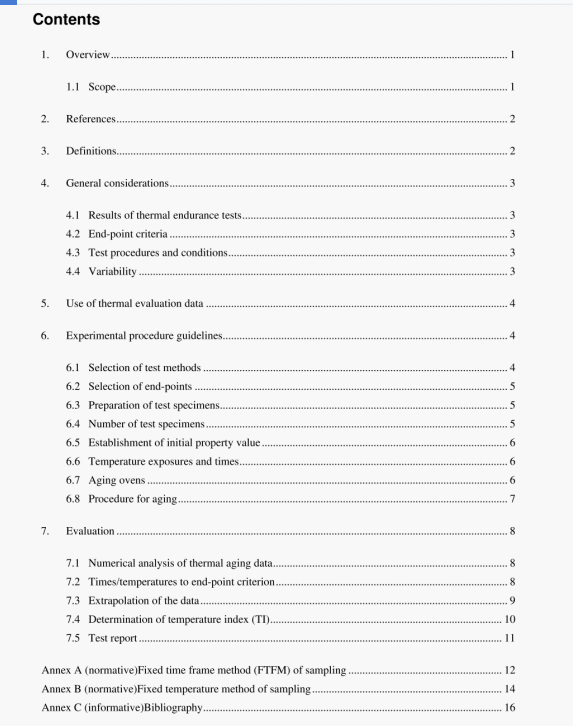IEEE Std 98:2002 pdf free download.IEEE Standard for the Preparation of Test Procedures for the Thermal Evaluation of Solid Electrical lnsulating Materials.
4.General considerations
The practice to assess the thermal endurance of insulating materials is to age the materials at higher temper-atures than the intended service temperature and to conduct diagnostic tests at ambient temperature todetermine retention of properties.
4.1 Results of thermal endurance tests
The results of thermal endurance tests can be described by the Arrhenius relationship between the logarithmof time to a certain degree of property change and the reciprocal of the absolue temperature,K.Thisrelationship is often used for extrapolating the times to the same degree of property change at lower temper-atures. Performing thermal endurance tests at three or more temperatures serves a double purpose: first, theconfidence limits of the extrapolation are improved and, second, a check is provided of the basic assumptionthat a linear relationship exists between the logarithm of time and the reciprocal absolute temperature.Thislinearity may not exist if there is more than one dominant deterioration mechanism in the range of agingtemperatures.An extrapolation of the results may not be justified if this check is negative.
The aging curve may be extrapolated (see 7.3) to a length of time (usually between 20 000 h and 40 000 h)which is specified in the thermal evaluation procedure for a particular insulating material. The Tl for thatmaterial is the number that is equal to the value of the temperature obtained from the life-temperature curveat the arbitrarily specified time.
The aging curve gives the most complete information about the results of an accelerated thermal aging test.Such curves can also be used to compare materials expeditiously.
4.2 End-point criteria
TheTI of the material is determined by end-point criteria based on the material ‘s ability to withstand stressessuch as electric field,mechanical tension,or flexure, etc.. or is based on changes in a property of thematerial.All the properties of a material subjected to heat aging do not deteriorate at the same rate and,consequently, Tls should be obtained for all properties related to possible modes of failure of the material inservice. A material may therefore be assigned more than one Tl derived from the measurement of differentproperties
4.3 Test procedures and conditions
Different test procedures have been and are to be developed for different kinds of insulating materials suchas impregnating varnishes,sheet insulation, etc.Experience has shown that some insulating materials incombination influence one another during the thermal aging process. This interaction may increase ordecrease the relative thermal life compared with the life of either material tested alone. For example, thethermal life of enameled magnet wire may be either increased or decreased, depending upon the insulatingvarnish used to impregnate windings containing the enameled wire. Metals in contact with insulating materi-als may also affect the thermal aging of the materials. Since insulating materials are often utilized incombination, test procedures may provide for evaluating combinations of materials.
IEEE Std 98:2002 pdf free download
